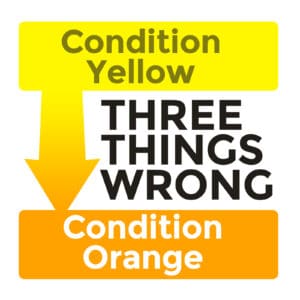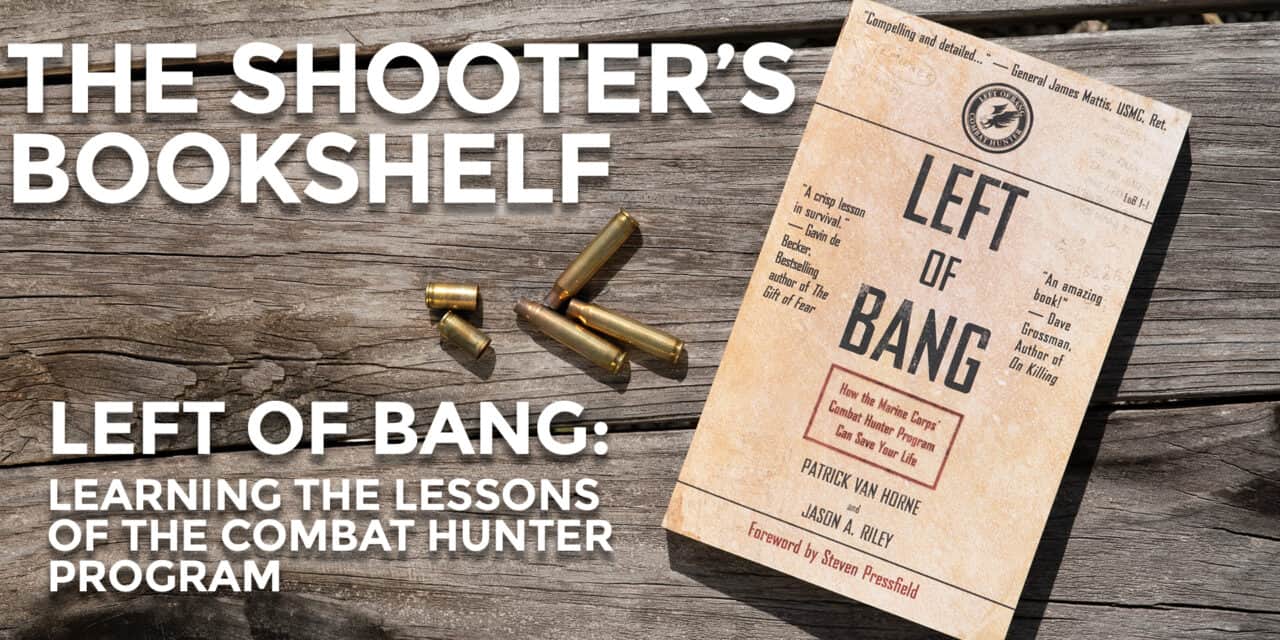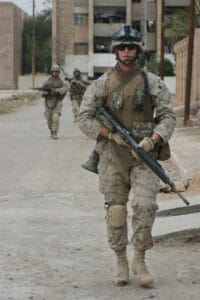“Left Of Bang” Is Right On The Money
Early on in the Iraq War, the United States military was in big trouble. They had the firepower to quash anything and anybody who tried to use force against them. That firepower, however, could only be brought to bear after the fight started. Our military, as powerful as it was, wasn’t able to tell when the situation in a seemingly normal area of Iraq was about to turn into a firefight.
Imagine a firefight as a line, with the midpoint being where the fighting started. Our military was winning the battle from the start of the firefight (the “Bang”) until the fighting stopped (the “right of bang”). Where we were ineffective, though, was figuring out what was happening before the shooting started. We needed to win the battle on the left of bang.
Enter General James “Mad Dog” Mattis
In 2006, General Mattis realized the losses the Marines were suffering in Iraq were untenable. Marines in Iraq needed to learn how to spot trouble before it happened. General Mattis created the Combat Hunter program to teach Marines situational awareness so they can spot an ambush before it happened. The Combat Hunter program brought in experts from the world of big game hunting, urban warfare, and undercover law enforcement to create a program that would help Marines look for the clues that might mean an attack was on the way.
The program they created taught Marines to develop a proactive mindset from four different elements: situational awareness, sensitivity of baselines and anomalies, critical thinking, and decision-making. “Left of Bang” is a book about what those elements are, how the Marines applied them in Iraq and how they apply to our lives over here in the U.S.
The Theory And Practice Of Situational Awareness
One thing I have noticed in my journey towards a safe and secure armed lifestyle is how many trainers talk about how important situational awareness is, but so few talk about how to attain it. I’ll admit it comes naturally to me. I have always been a people-watcher, so looking around when I’m outside the house is second nature to me. However, I know I am the exception, not the rule. One of the big takeaways from “Left of Bang” for me was the steps laid out in the book on how to pay attention to your environment. Rather than just say “Keep your eyes peeled for trouble,” this book lays what trouble might look like before it actually becomes trouble.
It’s All About The Base(line)
Ever get nervous when travelling overseas? Does walking through a strange neighborhood at night give you the creeps, even if it’s a neighborhood in a nicer part of town? We get that feeling of uneasiness because we don’t know what “normal” looks like in those areas, and so we’re not sure if what’s happening around us is a good thing or a bad thing.
“Left of Bang” walks the reader through the process of six key elements to establish a baseline of “normal” for any given area, whether that area is a street corner in the Middle East or Main Street, USA. Those six elements are:
- Kinesics: Body language, body movement, and nonverbal communication
- Biometrics: Sweating, skin color, muscle twitches, and other involuntary responses
- Proxemics: Where are people standing in relationship to each other, and especially you?
- Geographics: Is the area a good spot for an ambush? Has there been trouble there in the past?
- Iconography: What visual signals are the people around you sending out?
- Atmospherics: The mood of the place, aka “I don’t know… I got a bad feeling about this.”
Using these six elements to establish what normal behavior looks like in any given community will allow us to recognize if anything is out of place, and what that might mean to us. However, absolute normal rarely happens. Things are always changing in any given community, so what might be “normal” one day is not normal the next. One of the big takeaways from this book for me was how to recognize the somewhat unusual from a potentially dangerous situation.
Three Strikes and You’re Out
One of the key elements of “Left Of Bang” is equipping the reader with the skills to correctly analyze a given environment, and then empower them to take action once action is justified. The book walks us through the “Combat Rule Of Three” and shows us how it applies to any given situation.

When there’s three things out of place, it’s time to bump up a level on the Cooper Color Code.
Simply put, the Combat Rule of Three is if you spot three anomalies in the six elements which establish “normal,” you must make a decision to act. What that action is may vary according to who you are, where you are and what your mission is, but if three of the six indicators are coming up sketchy, it’s time to act. What that action might be, though, is different for a soldier in Iraq than it is for a law enforcement officer or an armed citizen in America.
Which brings me to the biggest issue I have with “Left of Bang.” The book includes ways to apply the skills of the Combat Hunter program to armed citizens, but the only example they use is how to apply these skills in case of an active shooter event. Active shooter incidents do happen here, unfortunately. However, each year, there are far more incidents where armed citizens with a concealed defensive firearm needed to defend themselves against grievous bodily harm than there are active shooter events. A little more emphasis on the real-world application of the principles behind the Combat Hunter Program would have been a nice touch.
Why “Left Of Bang” Is Right For You
That’s not to say that “Left Of Bang” is of no interest for those of us who don’t wear a uniform and carry a gun. Quite the contrary. “Left Of Bang” was the first book I’ve read which took the theoretical elements of situational awareness and the Cooper Color Code and gave a practical, common-sense way to put those theories into action. “Left Of Bang” will teach you how to look for trouble when you’re out and about, and more importantly, how to recognize it before it happens.




